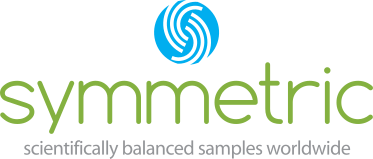- Call Us:
- 817-649-5243
- info@symmetricsampling.com
Key to Sampling Success? Get Creative! #2
June 29, 2023
The Key to Sampling Success? Get Creative!
Part 2: Recruiting for Online Qualitative and In-Home Taste Tests
COVID-19 restrictions and precautions have forced many qualitative projects away from in-person research settings to virtual, online settings, which presented unique sampling challenges for market researchers.
For both online and in-person qualitative, researchers have to over-recruit to obtain qualified participants, which was even more difficult with online qualitative, especially during the pandemic. This was because participants (and researchers) were fairly new to online techniques and generally unsure what to expect, especially when participants were recruited from a panel database that was unfamiliar with online qualitative research. Researchers should work with a panel whose members are familiar with online qualitative research, to overcome low show rates. Once recruited, participants must be sent frequent reminders, with the sampling partner reaching out much more often than they would for a traditional, online quantitative project.
Another problem with recruiting for online participants was getting generally less suitable participants. While they might have met the project specification and would have done great on an online quantitative survey, they did not participate well in an online qualitative format, because a different type of respondent was needed. Ensuring that participants are talkative, well-spoken, able to communicate their thoughts, and are comfortable in an online format (i.e., using online communications technology) can help avoid getting ill-qualified respondents.
In addition, another problem with recruiting participants for online qualitative and in-home taste tests was ensuring that participants were on task and ready to participate. Researchers reported that participants would join the online meeting late (even after being reminded by the sampling firm); or call from a crowded public location with too much ambient noise, a place where they would have to wear masks, or with too many distractions/background noise (e.g., other people, television or music playing, etc.) – none of which was conducive to running the project smoothly! Frequent communications about the project, what to expect, and how to participate can help ensure that participants would be productive and that the research would be conducted properly.
All of this means that you must collect all relevant emails and phone numbers from every participant, so that you can reach them in multiple modes. Additionally, using calendar software will ensure that the project is put on their electronic calendar once your sampling partner finds a well-suited participant. That calendar notice should include detailed information about the project and the contact person in case something comes up before the research appointment. Of course, your sample provider should also check to verify the participant has the technology necessary for participating in the research, especially if phone-only is not ideal for the project. Online sampling companies will often pass on this kind of work because it will take too much time to make the project successful if their panel members are not suitable for online qualitative research.
Creative Sampling: Recruiting Great Online and In-Home Participants
An Online Focus-Group Recruiting Case Study
One of our technology clients wanted to conduct online focus groups among a specific IT audience. Respondents must not only have qualified for the discussion, pass the technology check, and be well-spoken, but the client expected everyone to participate at a level that they considered satisfactory. We were responsible for providing participants who would show up and provid great insight, which involved a group of IT people who were very busy and limited on time! To fulfill that responsibility, we first programmed the online screener—which included many open-ended questions to see how talkative the respondents would be—within our proprietary software, Logician, and recruited a few more respondents than was needed for the group, so that we could deliver a solid show rate. The qualified panel members received the link for the online focus group 24 hours before the scheduled meeting via email, and the date and time was placed on their electronic calendars via our scheduling software. Additionally, they received a phone call from the panel customer-service team on the day of the project to not only remind them, but also to re-confirm that the time of the interview still worked with their schedule. If the scheduled time no longer worked, then we immediately rescheduled them for a more convenient time to prevent any no-show problems for our client as there is nothing more disappointing than to have a client (and maybe the end client) online, ready to conduct an interview, and not have a respondent ready and available. The phone communication, calendar invite and email reminders are keys to a successful online qualitative interview.
Thus, not only did Symmetric find and recruit the panel members, we also stayed hands-on until each member logged into the interview. Because of our frequent communication via phone and email, the client had all interview spots filled to conduct the online focus groups, and, thus, could not have been happier with the quality of the interviews with our panel members.
An In-Home TasteTest Case Study
Taste tests during COVDI-19 had to be conducted remotely and be socially distanced, thus, excluding a central facility or a restaurant. This, of course, placed a burden on the sampling firm to find qualified respondents and to ensure that the taste test was conducted properly by each participant.
Our casual-dining restaurant client was interested in testing new wing flavors via taste-testing among current customers. Traditionally, respondents would visit the restaurant or a test kitchen with other participants, try the product, and complete the survey at that time. Instead, participants picked up the test food via ''drive-through/to-go style'' in the restaurant's parking lot. They then took the food home to taste it and complete an online follow-up survey afterward from home. We used our calendar software and frequent reminders to communicate to participants the details about when to pick up and at which restaurant locations. Equally important, because the restaurants were open for regular drive- through and take-out customers, we made sure that respondents and restaurant employees were fully trained on how to handle the study participants differently from their regular customers, and to verify the correct paperwork (instructions and survey link) was provided to the respondents in their to-go order along with the instructions we emailed.
Because of our clear and frequent communication, we were easily able to achieve all the completed interviews the client wanted and within the time frame they needed.
Creative Sampling Works
Even in the most challenging circumstances, you can successfully complete demanding projects if you sample creatively. Use the fundamentals of traditional sampling approaches, but apply them creatively to whatever research situation presents itself. You may need to do sampling differently to get to the people and information you need, but you can still get it done if you are willing to think “outside the box.”
You might also like Creative Sampling for iHUTs and Mail-to-Internet surveys.
https://www.symmetricsampling.com/blog/key-sampling-success-get-creative-1/
Do you have a difficult recruit or a hard-to-find sample? Contact Symmetric for help today! info@symmetricsampling.com
Stay tuned for our next Creative Sampling Blog on the recruiting challenges, or Diary Studies and mixed-methodology projects!
